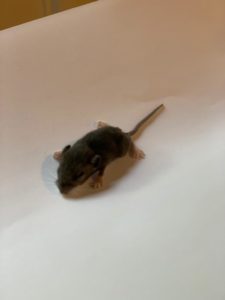It it a mouse or a rat? We get customers that call the office frequently with this question. The answer is mostly straight forward except when a juvenile rodent is involved. Having the answers ready to the following questions may help ease your mind.
- Are you seeing droppings? What size are they?
- Where are you seeing this pest?
- Is there any damage? What does it look like?
- Do you feed animals such as birds or livestock?
Rodent droppings? Is it a rat or a mouse?
This is the most basic and the most common question a pest management professional will ask. The reason is because rat and mouse droppings are very different in size and shape.

In CT our structure infesting rodent pests are limited to the house mouse, deer mouse and Norway rat. All three of these rodents will leave evidence of their presence where they have been. Of the three, rats have the largest droppings. The droppings from adults are about 3/4″ long and capsule shaped. However, this may differ slightly depending on the age of the rat.
As for mice, their droppings are much smaller and are similar in size and shape to a grain of rice.
Where are you seeing this pest?
Actual visual evidence of the rodent is good to have because seeing is believing. You’re much more likely to visually see rats than mice.
Is there any damage? What does it look like?
When asking the question is it a rat or a mouse damage can help with the ID. The chewing damage from a rat and mouse look quite different and while both pests can and will chew holes the damage from rats is much larger. Chewing damage from an adult rat will average 2″-3″ in diameter and be well defined.
Are you feeding birds outside? Do you have livestock?
This question could have been number one as it is by far and away the number one reason why people end up with rats. As a pest management professional I have to weigh what I know to be true vs being an animal lover. The reason is that I have a bird feeder at my own home. To date I may lucky that I’ve never had rats, but I don’t think so. The reason is that I regularly clean (with a rack and shop vacuum) the ground beneath the feeder and while it’s a biological fact that rats need more water than food, food is still important. If you deny it you’re less likely to develop a problem.
If you raise livestock it will be more difficult to deny food, but Envirocare Pest Control has answers as to how to do this.
Rats and mice certainly can be a problem and it’s important to know which pest you have. The reason is that the tools, price and procedures are different for both.
If you’re not sure whether you’re dealing with rats or mice Envirocare Pest Control can help. Call us at 1-888-879-6481.
